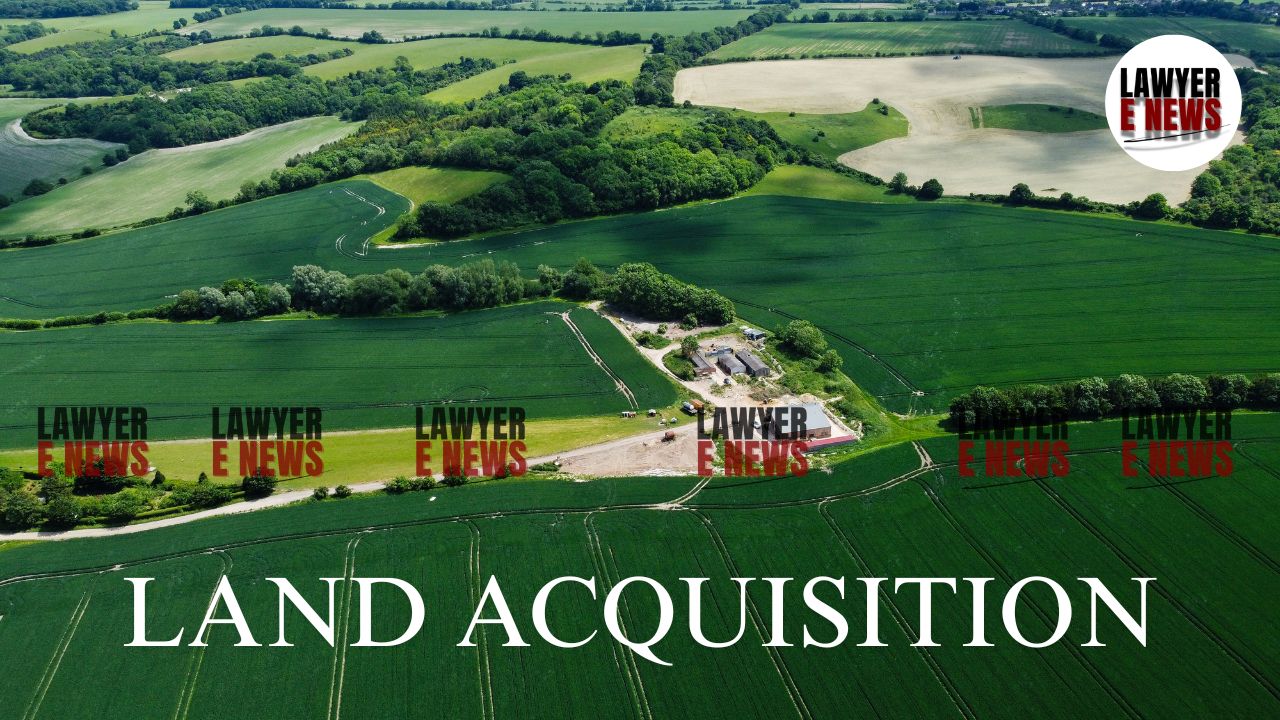-
by Admin
17 December 2025 8:55 AM



GIDC’s Own Premium Rate Forms Best Exemplar—Arbitrary Low Valuation Set Aside - Supreme Court in Manilal Shamalbhai Patel (Deceased) Through His Legal Heirs & Others v. Officer on Special Duty (Land Acquisition) & Another [Civil Appeal No. 14670 of 2015] allowed the appeal partially and enhanced the compensation for acquired land from ₹30 per sq.m to ₹95 per sq.m, relying on the Gujarat Industrial Development Corporation’s (GIDC) own land pricing as the most appropriate market exemplar.
Justice Pankaj Mithal and Justice S.V.N. Bhatti held: “The GIDC itself fixed the premium price of land at ₹180 per sq.m in the same industrial estate in 1988. Taking into account a modest price increase and development deductions, ₹95 per sq.m is the just compensation.”
“Allotment of Nearby Plot at ₹180/sq.m by Same Acquiring Body Is Best Indicator of Value—Lease Plot for Petrol Pump Used as Benchmark”
The appellants challenged the low compensation awarded under Section 11 of the Land Acquisition Act, 1894, and subsequently enhanced by the Reference Court from ₹11 to ₹30 per sq.m. They relied heavily on an allotment letter dated 07.06.1988, showing that Plot No. 7/1 in the same area was allotted to M/s Dhanlaxmi Automobiles for a petrol pump at ₹180/sq.m.
Though the respondent-State argued that the plot was commercial and leased, the Court clarified: “Even if the land was allotted for petrol pump purposes, the underlying value was commercial. Since the appellants’ land was freehold and within proximity, it justifies treating ₹180 as the base rate.”
“Judicial Estimation Requires Realistic Deduction—50% Reduced for Development and Area Size”
While acknowledging the potential of the appellants’ agricultural land, the Court applied a standard 40% deduction for development costs (roads, open spaces, utility networks) and 10% further deduction for largeness in area, relying on consistent judicial principles.
Justice Mithal explained: “The transferable/saleable area after development seldom exceeds 50%. Deduction of 30% to 50% is routinely applied to reflect such costs. Here, 50% total deduction is justified.”
Thus, after modestly inflating ₹180 by 5% for price rise (₹189, rounded to ₹190), the Court fixed the final rate: “After deducting 50%, the value is ₹95 per sq.m. The Reference Court’s award of ₹30 was clearly undervalued.”
“No Evidence of Income from Lemon and Guava Trees—Compensation Already Paid for Vegetation Must Suffice”
The appellants also sought enhancement of compensation based on the presence of fruit-bearing lemon, guava, and mango trees on the acquired land. However, the Court found that: “No documentary proof of annual income or yield was provided. Merely citing the presence of trees in the APMC Anand report is insufficient.”
The SLAO had already awarded ₹1,06,300 for trees, which the Court let stand, stating: “In absence of specific revenue records or sale proceeds, no further addition can be made on account of trees.”
“Determination of Compensation Not a Mathematical Exercise—It Is Judicial Estimation Guided by Evidence and Equity”
The Court reiterated that land compensation cannot be based on algebraic formulae, and some level of approximation is always permissible. The judge is expected to sit in “the armchair of a prudent purchaser” and assess realistic value.
As summed up: “The market value is to be fixed based on exemplar evidence, adjusted for future use, development cost, and fair guesswork—not based on speculation or unverified expectations.”
The Supreme Court set aside the Gujarat High Court’s order dated 14.08.2015 and modified the Reference Court’s award of 31.12.2011. The compensation is now fixed at ₹95/sq.m with full statutory benefits, including solatium, interest, and additional compensation under the Land Acquisition Act.
Justice Mithal concluded: “We are convinced that ₹95 per sq.m reflects the real market value at the time of acquisition, adjusted for development and location.”
This decision is a textbook reaffirmation that market exemplars closest in time and location—especially when issued by the acquiring body itself—must guide fair compensation, and that judicial estimation must be structured, not speculative. The Court also clarified that mere presence of vegetation cannot elevate compensation without income proof.
In the Court’s words“The landowner is entitled to fairness, not fortune. Judicial estimation must serve justice without inflating or deflating the truth.”
Date of Decision: 25 March 2025
